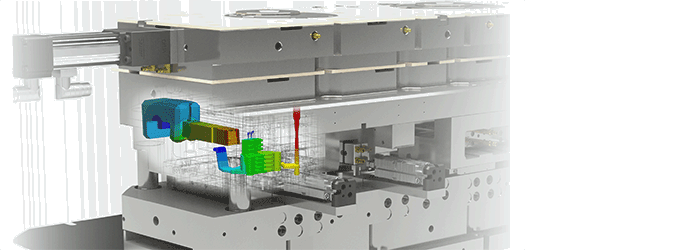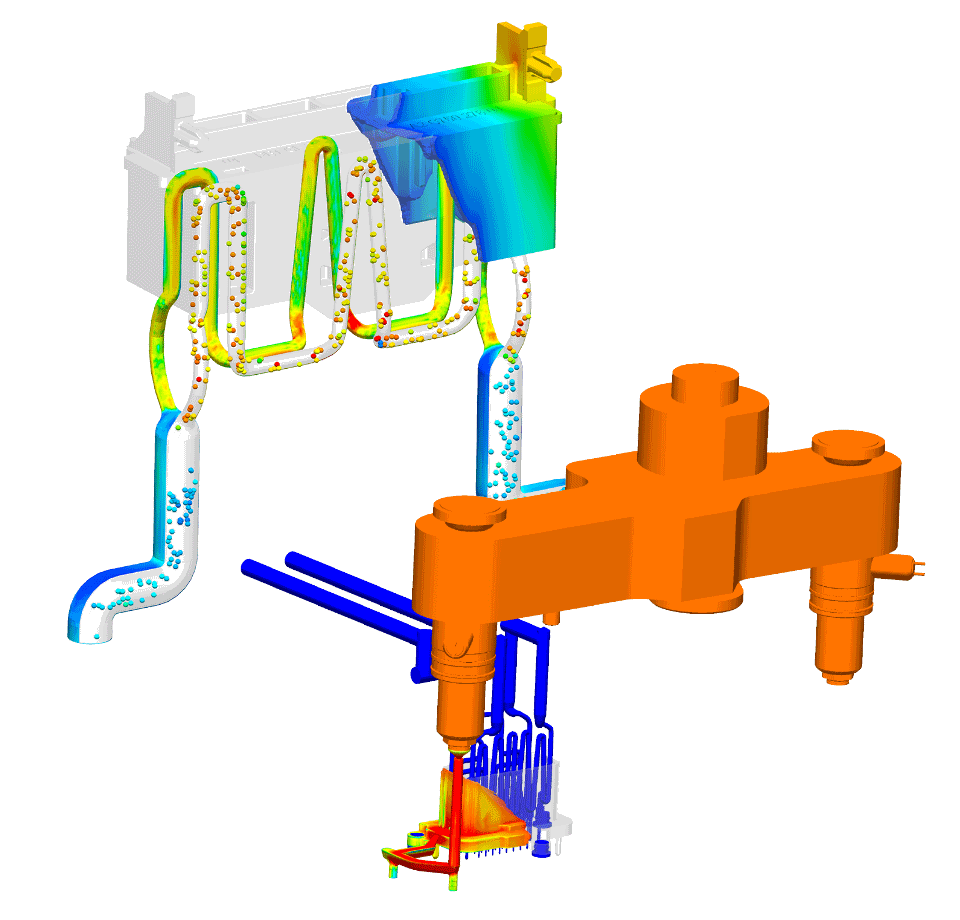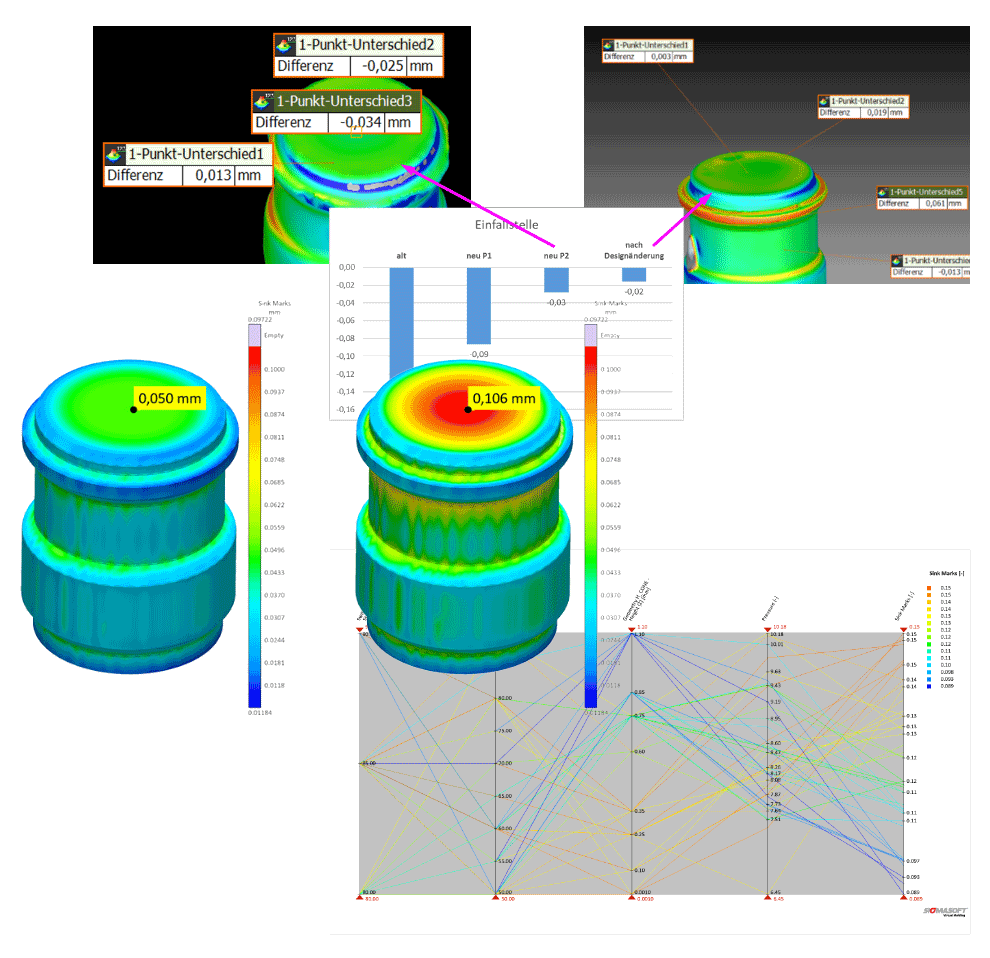

Integrated injection moulding simulation is a core competence of our company and a central component in the product development process. It enables the highest quality and precision in plastic-metal components as well as a significant increase in efficiency through digital process optimisation. With the digital twin, we recognise and avoid errors at an early stage, ensure quality, reduce time-to-market and
optimise resources for greater sustainability. Through simulation, we ensure cost efficiency and fulfil the highest demands in terms of functionality and manufacturability. Our simulation engineers are highly trained and in constant dialogue with our experienced practitioners from series production.
Our component simulation lays the foundation for the virtual optimisation of plastic parts as early as the design phase. By analysing the filling behaviour, wall thicknesses, orientations and the solidification process, we identify critical hotspots and avoid component distortion. Cycle times are determined and optimised, while the material behaviour and component design are analysed in depth.
Even complex factors, such as the deformation of metallic inserts due to injection pressure, are taken into account. The precise simulation results form the basis for customised injection moulding tools and processes, enabling improved product performance for sophisticated and high-precision components.
Thermal management and the melt control system of the injection mould are the key factors for maximum component and process quality. Our simulation of moulds and temperature control supports the mould design by optimising the thermal management and temperature control channels. With the help of multi-cycle analyses and near-contour temperature control channels, ideal for metal 3D printing, we achieve homogeneous temperature distribution and maximum cooling efficiency. This comprehensive thermal management shortens the cycle time and minimises distortion, guaranteeing innovative and economical solutions.
By calculating the pressure requirement of the temperature control channels, we verify the correct function and also provide support in the selection of temperature control units.
Virtual tests balance heating/cooling rates, analyse hot runner systems and avoid material damage through shear-optimised gating systems. The result: long-lasting moulds with reduced recursion costs, energy-efficient processes and stable quality over thousands of cycles.


Our injection moulding process simulation simulates practical conditions over several cycles. This allows us to support production at a very early stage with valuable initial parameters for the start of series production. Using Design of Experiments (DOE), we carry out automated parameter studies to identify process errors and optimise robustness. In this way, we make the influence of certain parameters on the end result transparent and optimise at the right point.
We successfully implement critical processes such as the direct overmoulding of electronics with the help of simulation. In multi-component injection moulding, we evaluate the melting behaviour of the first component and exert a targeted influence on it.
The method enables precise predictions of shrinkage and warpage, even for multi-component parts or metal-plastic hybrids.